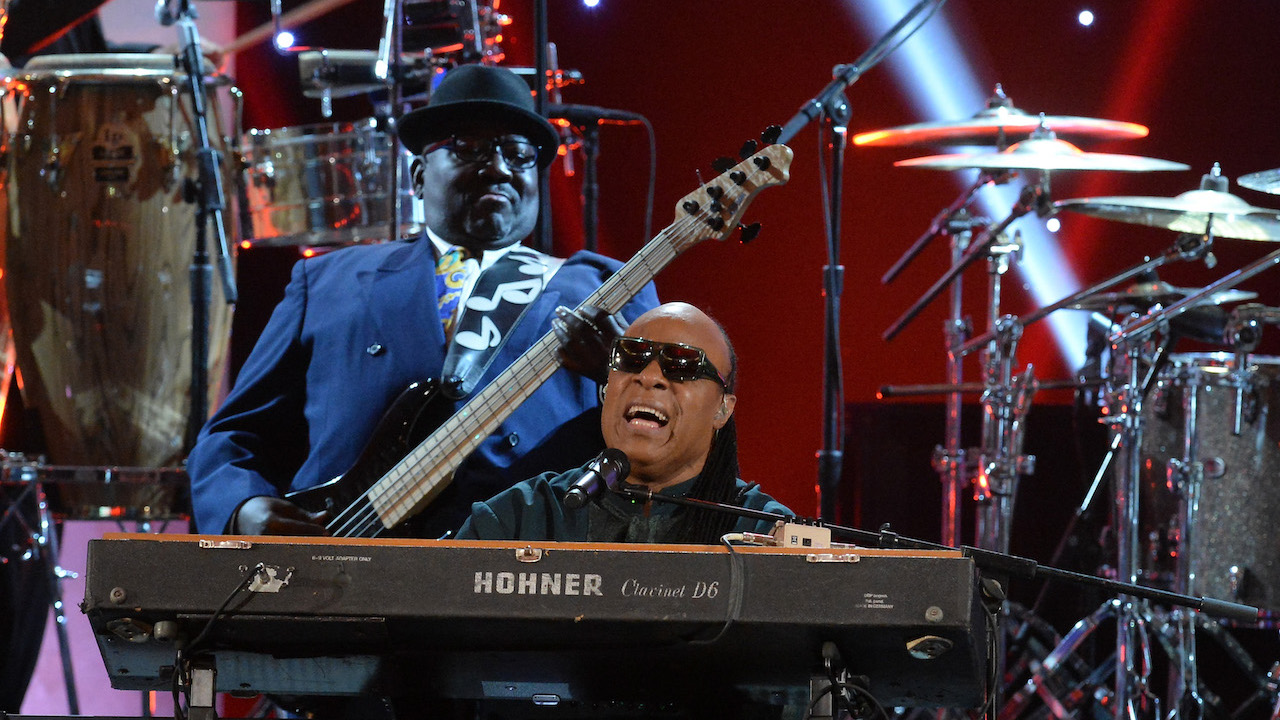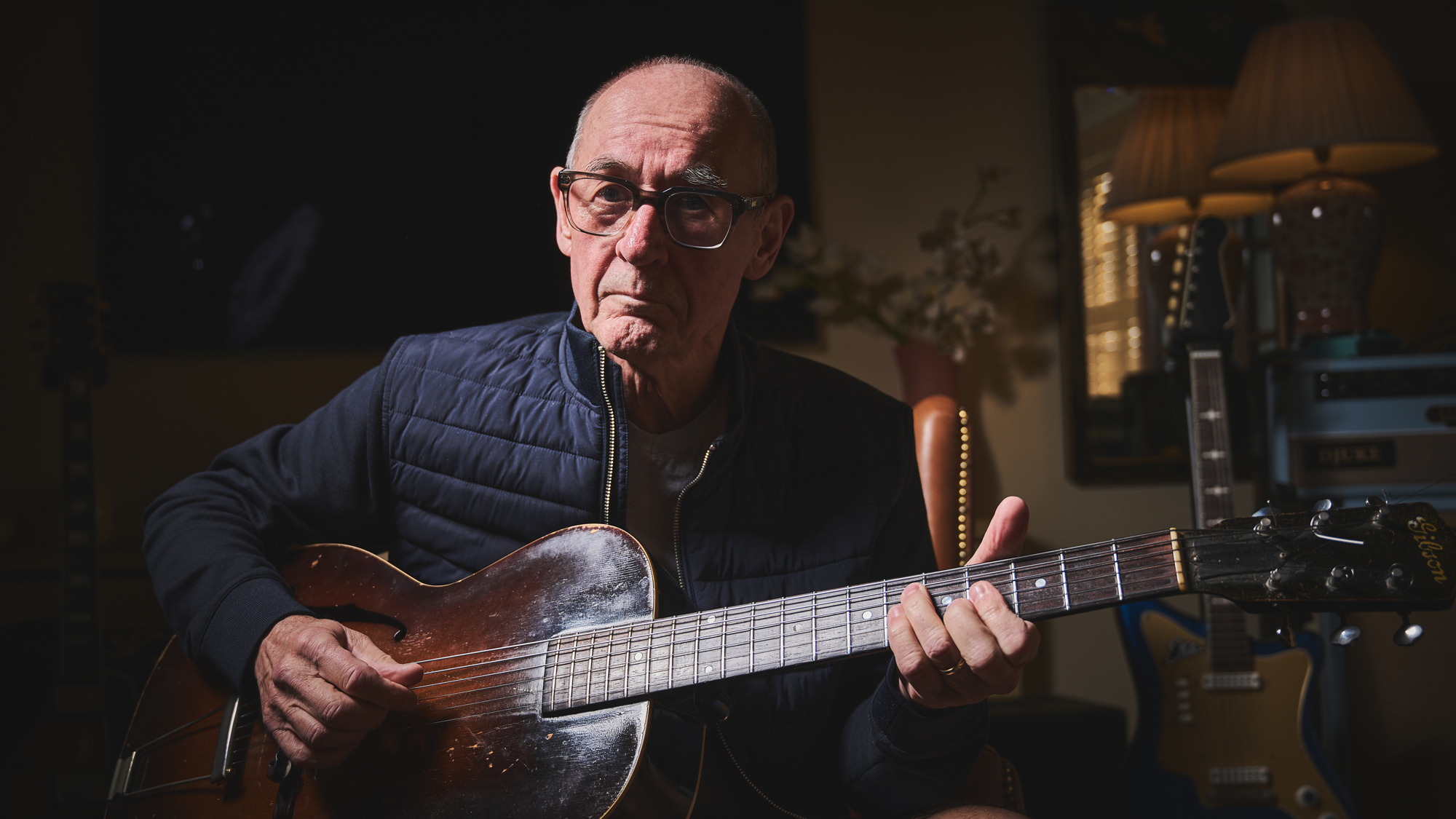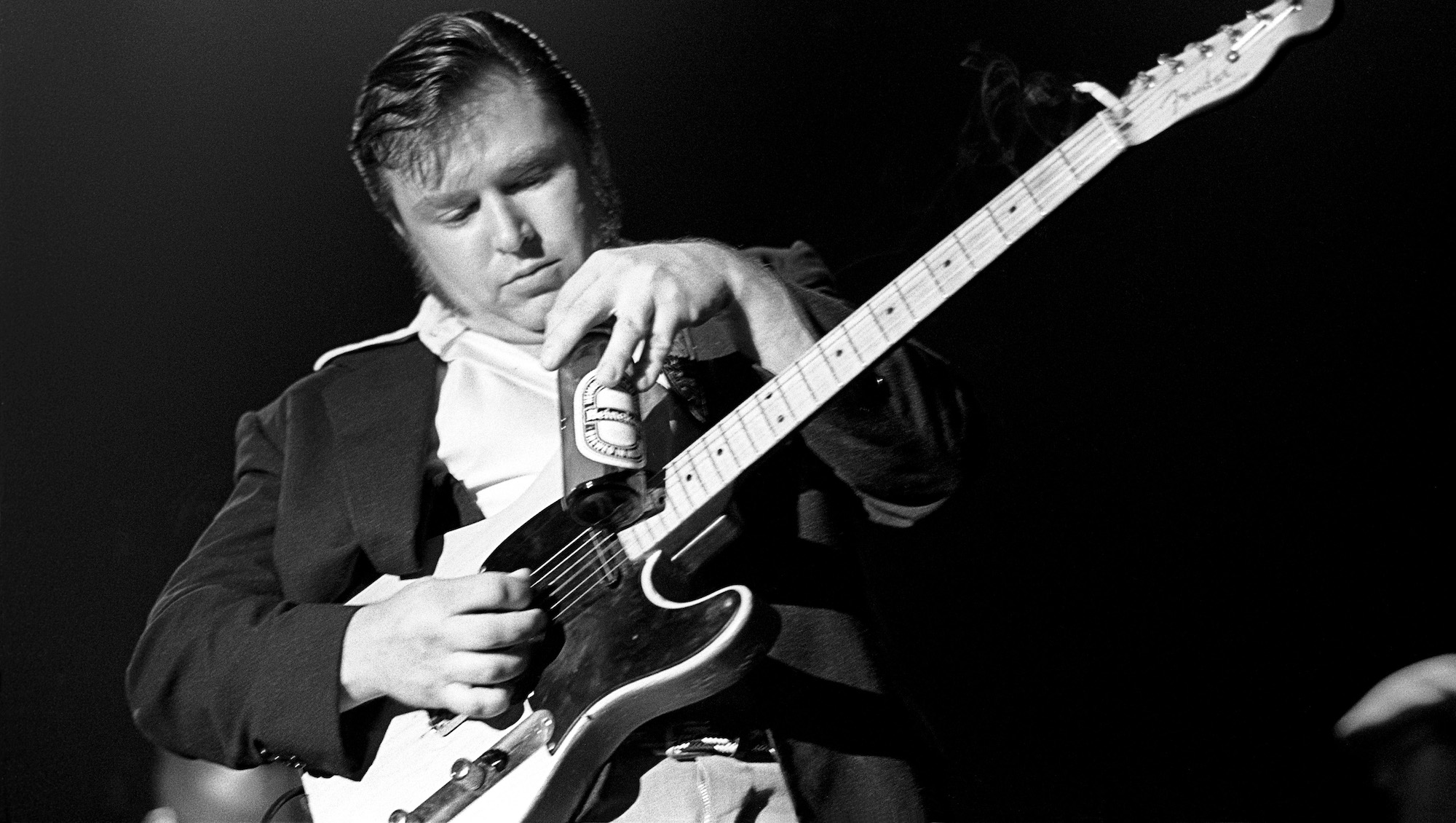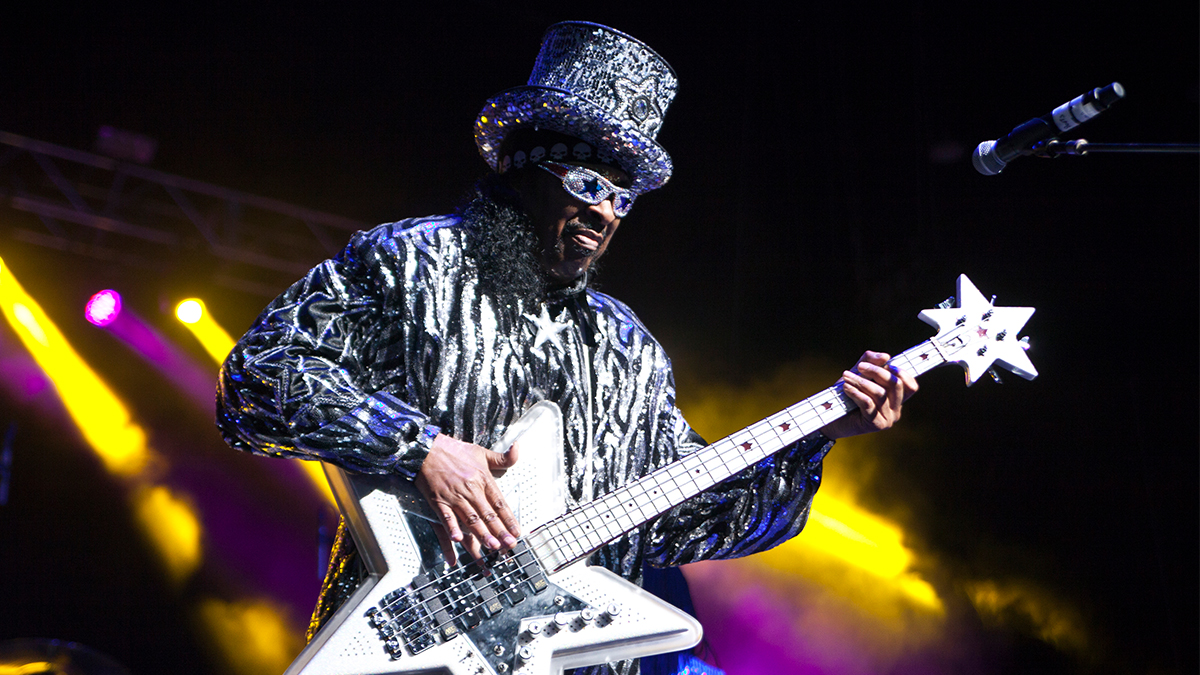“There I was, 28 years old, playing with Stevie Wonder – and he makes the song a bass feature!” Did Nate Watts play on the most under-appreciated bass anthem ever?
The story behind the incredible 10-minute bassline on Stevie Wonder’s 1981 hit Do I Do

Like hit songs, bass anthems come in all varieties. There are the solo album features, such as Stanley Clarke’s School Days; group-set gems like Jaco's Teen Town, with Weather Report, and Paul McCartney's Come Together, via the Beatles; and sideman shoutouts such as Willie Weeks on Donny Hathaway's Everything Is Everything.
And then there's Do I Do. When you consider the song is an over-10-minute album track added to a compilation by Stevie Wonder, whose left hand had spun its own bass masterpiece (Boogie on Reggae Woman), but played no part in this recording, the trail would seem to run cold.
In truth, more than 40 years after its creation, Do I Do stands as arguably the most under-heralded bass guitar anthem of all, and one of the singularly great James Jamerson-inspired performances by a second-generation Detroit bass guitarist, Mr. Nathan Lamar Watts.
In the post-disco, but still dance-crazy era, an edited-down, five-minute version of the feel-good song – a cooing love ode to a girl – was released as a 7-inch single. It reached #13 on the Billboard Hot 100 chart (and #10 in the U.K.).
The 1981 session for Do I Do took place at Wonderland Studios, on Western and 7th, in L.A's Koreatown. The studio didn't have a control room and board yet, so a rented Record Plant remote truck parked outside served that function.
Tracking in the main room were Watts, on his 1979 Music Man Stingray, drummer Dennis Davis, guitarists Ben Bridges and Rick Zunigar, percussionist Earl DeRouen, and Isaiah Sanders on Fender Rhodes.
Wonder was in an iso booth with his grand piano and a mic. Fifteen horn players, four backup vocalists, Paul Riser-arranged strings, Dizzy Gillespie's trumpet solo, and Wonder's lead vocal and harmonica solo would all be overdubbed later.
Get The Pick Newsletter
All the latest guitar news, interviews, lessons, reviews, deals and more, direct to your inbox!
Wonder didn't provide a scratch vocal; instead, he used the mic to call out sections of the song as it went along, some of which can be heard on the track. Mic trouble on the drums during the first verse stalled the first take, but the second take went all the way through and is what appears on the album.
“We had been together a while and were a heck of a band at that time,” Watts told Bass Player. “So everyone picked up Stevie's directions instantly. We were sounding so good and Steve kept adding sections; he just didn't want to stop!”
Before diving into Do I Do, it’s highly recommended that you tune your bass down a half-step, as Nate Watts always has (since being inspired to do so after first hearing Jimi Hendrix). This will essentially allow you to play the part in the key of C, giving you access to the pivotal open string moves Watts employed.
The song begins with a three-note pickup from the guitar, the last of which Watts catches with his B pickup note. This track-long rhythmic phrase (the last 16th of beat three and the second and last 16ths of beat four) is key, as it was the master rhythm that Stevie Wonder gave Watts to construct his bassline around.

First, note how Watts always anticipates the downbeat by a 16th-note and uses hammer-on slurs for smoother phrasing where applicable. Second, dig his use of the 6th in the I and IV chords, and the general B and E pentatonic flavor. And third, catch his willingness to use chromatic movement and his preference for filling over the V chord – usually with a B pentatonic tonality (first heard in bar 8).
The first verse continues like the intro, with a cool V-chord fill in bar 12. “I’m not sure why I filled so much in those spots, I guess there was space and it helped cap each phrase; I wasn't thinking that deeply, though, I was just playing and reacting, and hoping Steve dug it.
“Inspiration-wise, I'm just drawing from my three main influences – Jamerson, Chuck Rainey, and Curtis Mayfield bassist Joseph ‘Lucky’ Scott – while trying to apply my own take on their use of chromatics, pickups, and delayed downbeats.”
The first chorus is actually set up by the two chords at the end of bar 16. This leads to the pentatonic band unison riff (a la Sir Duke), and Wonder's ear-grabbing altered dominant chords. The section concludes with one 4-bar verse phrase and a subtle variation: Watts plays two eighth-notes on beat three, as opposed to the more syncopated beat three he played in the intro and verse.

As if he hadn't already rallied the band behind him, Watts really makes the track his own at the first bridge. Setting up a call and response pattern, he plays ascending root-5th-9th-type figures, answering them with free-flowing, descending, lyrical runs (which nicely fill the gap in Wonder's vocal).
“I was taught that on the bridge you have to make your part different from the rest of the song, to get that contrast; so I went back to Jamerson, Chuck Rainey, and ‘Lucky’ Scott. I was amazed when l heard it years later: I played that? Really?”
Although Dizzy Gillespie's trumpet solo was overdubbed later, Watts's upper-register grab at 04:25 sounds like a live reaction to it. Wonder has Dizzy blow through the chorus before responding with his own harmonica solo. Note that Watts gets a little sticky-fingered on the unison riff at 05:19. “I offered to fix those, but Stevie liked the way they felt and kept them.”
At 08:20, Wonder calls for all except percussionist DeRouent to stop. He then begins his rap, which is answered by those musicians with mics (not Nate, who adds a few slapped plucks).
Next comes Wonder's call out: “Nate”. Watts responds with an edgy looseness that takes him to yet more variation, while Wonder has a good time scatting (“I know the record's about to end, but we just gonna play and play until it goes away.”) towards what will ultimately become wordless vocals.
“At that point, it dawned on me that I hadn't slapped on the track, so I let loose with that pickup and two-bar fill, never thinking Steve would keep it; I was shocked when it remained on there!”
Like Bakithi Kumalo's similar slapped lick on Paul Simon's You Can Call Me Al, of which this is a potent predecessor, Watts instinctively goes to the relative minor (G# minor) to give his outburst a dominant, bluesy tonality.
Wonder reaffirms that Earl is playing by himself for the next four bars, before declaring, “Dennis is playing by himself, for the last eight bars.” Following six of those bars, Wonder begins a half-note countdown: 5, 4, 3, 2, 1 – with Wonder and Watts ending on the final downbeat, and Davis guessing wrong by anticipating his hit a 16th-note early.

The two most impressive elements of the Do I Do bass part are how massively Watts drives the groove and supports the song, while enjoying his forward role. “I consider myself to be so very fortunate. There I was, 28 years old, playing with Stevie Wonder, a musical genius, and he puts no restrictions on me and makes the song almost a bass feature!”
His advice for navigating the part? “Take it section by section. Attack the pocket, but be sure to give all the notes their full value; don't rush the fills, which can tend to happen, especially because of how often the downbeat root of the chord occurs a 16th-note early. Get into the groove, and have fun with it!”
Chris Jisi was Contributing Editor, Senior Contributing Editor, and Editor In Chief on Bass Player 1989-2018. He is the author of Brave New Bass, a compilation of interviews with bass players like Marcus Miller, Flea, Will Lee, Tony Levin, Jeff Berlin, Les Claypool and more, and The Fretless Bass, with insight from over 25 masters including Tony Levin, Marcus Miller, Gary Willis, Richard Bona, Jimmy Haslip, and Percy Jones.
“I asked him to get me four bass strings because I only had a $29 guitar from Sears”: Bootsy Collins is one of the all-time bass greats, but he started out on guitar. Here’s the sole reason why he switched
“I got that bass for $50 off this coke dealer. I don’t know what Jaco did to it, but he totally messed up the insides!” How Cro-Mags’ Harley Flanagan went from buying a Jaco Pastorius bass on the street to fronting one of hardcore’s most influential bands












